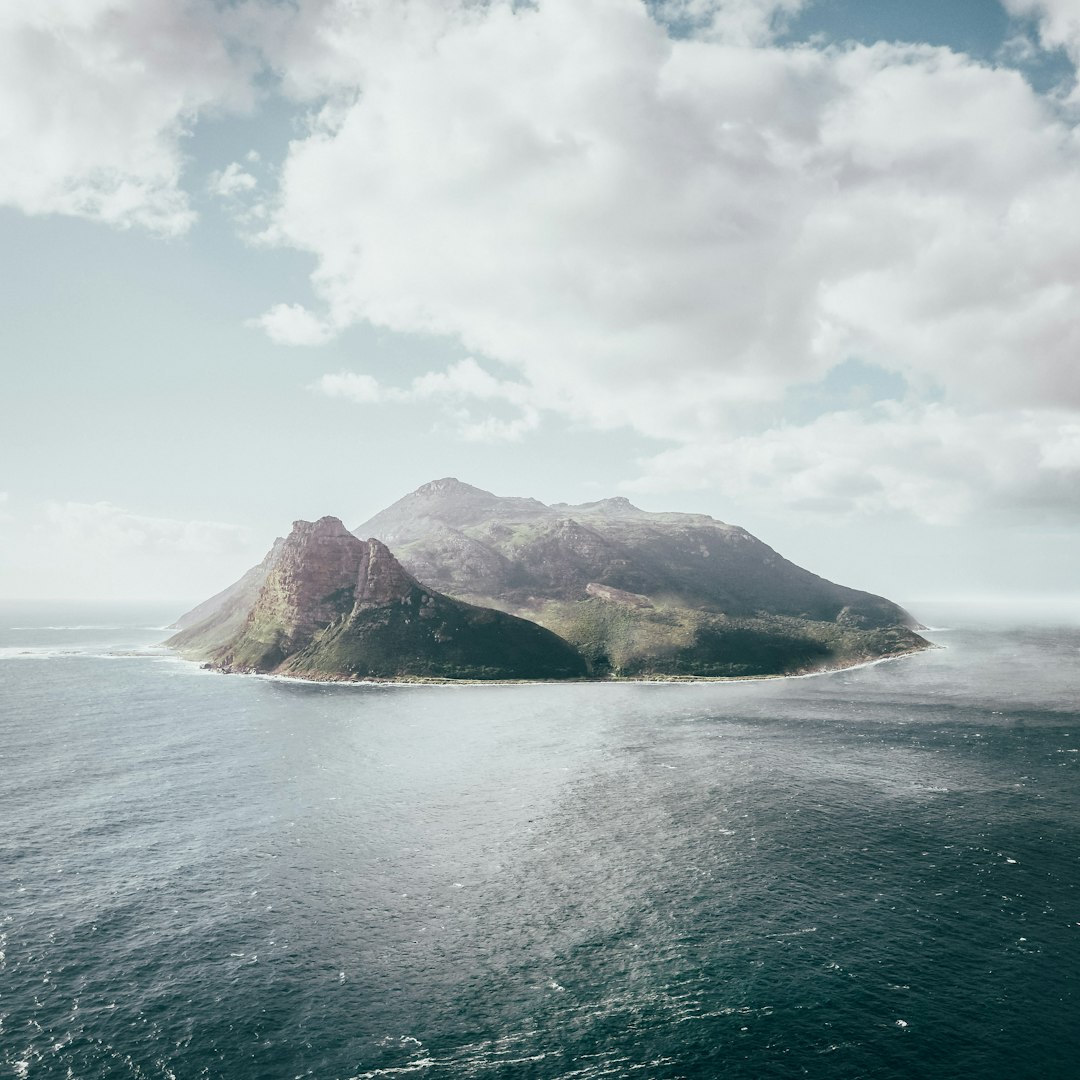Port Guide | Philippines | Dive Deep
Fuga Island

David Nakamura | Editor
Published on 2025-03-13
Congratulations! You've just docked at Fuga Island-the Philippines' best-kept secret and the kind of place that whispers rather than brags. If you're expecting rows of beachfront margarita bars and reliable Wi-Fi to upload envy-inducing selfies, sorry, friend, you've slightly overshot your destination by a few hundred nautical miles. Instead, Fuga is unapologetically rustic and refreshingly authentic, cloaked in sunlight, fringed by white-sand beaches, and guarded gently by reefs teeming with technicolor marine life. Once a notorious pirate hideaway during the colonial era (seriously, pirates-not the Johnny Depp variety), today it's a laid-back island where your biggest worries might be finding shade and prepping your snorkel gear. Pack water, snacks, and a healthy sense of humor (facilities here are charmingly sparse), then head to Barangay Mudoc for your initiation swim or snorkeling session in waters so clear they'll make city tap water blush. Welcome to paradise-with slightly fewer amenities, but infinitely more soul.

Philippines has 9 Travel Advisories
Stay up to day with regional travel advisories.
Notes from the Editor
Fuga Island is known for its beautiful white-sand beaches and clear waters, making it an ideal destination for swimming and snorkeling. Facilities are limited, so travelers should prepare accordingly.
Where do cruise ships dock in Fuga Island?
Port Name Fuga Island
Country Philippines
Region Southeast Asia
Ship Terminal Fuga Island Pier
Port Type Tender Port
Accessibility Fuga Island is relatively remote, with limited accessibility. The pier is approximately 1 km from the village center, which can be reached on foot or via local transportation options.
What's the weather like in Fuga Island?
Best Season to Visit Dry Season (November to April)
Climate Tropical maritime climate, characterized by wet summers and dry winters.
Weather Notes The dry season is generally pleasant; however, occasional weather disturbances can occur, especially towards the end of the dry season.
Temperature Range 75F to 90F (24C to 32C)
High Temp 94F
Low Temp 70F
Average Temp 82F
What do I need to know about Fuga Island?
Language Filipino
Currency Philippine Peso (PHP)
Card Widely Accepted 0
Population Approx. 1,500
Timezone GMT+8
How do I get around Fuga Island?
Local boats, motorcycles (habal-habal) available for short distances; walking is also an option.
What are The Best Things to do in Fuga Island?
Discover what you should do while you're in Fuga Island.
Adventure and Outdoor Activities
Fuga Lagoon Exploration | Editor Highlight

David Nakamura | Editor
Published on 2025-03-13
Best Time to Go
Morning
Cost
$50-$150 USD
Activity Level
Moderate
Where to Book
Online
Exploring Fuga Lagoon is a bit like stumbling into Mother Nature's secret afterparty-one that she casually forgot to invite humanity to. Nestled discreetly within Southeast Asia's labyrinthine coastlines, this pristine marine oasis flaunts an absurd abundance of colorful coral reefs and charismatic sea creatures who seem wholly indifferent to your Instagram feed. To dodge crowds (and the soul-sucking midday heat), set your alarm for an early dawn expedition; nothing sharpens your appreciation of biodiversity like realizing that a breakfast of questionable street noodles pairs brilliantly with shimmering turquoise waters and schools of sardines unimpressed by your snorkeling form. Reserve your boat at least a week ahead-spontaneity tends to sink here-and bring extra cash (about $50 per person should cover a local guide, boat hire, and snacks that probably taste better than they look). Pack a dry bag, sunscreen, and humility: you're visiting an underwater metropolis that's been thriving since long before humans first attempted the beach selfie. Ultimately, venturing to Fuga Lagoon is worth it-the marine life puts on a surreal spectacle worthy of Attenborough narration, and even if Nemo doesn't choose to photobomb you, the story of swimming through nature's own private aquarium will earn you bragging rights well into your sunburned retirement.
Fuga Lagoon Exploration
N/A
Explore pristine lagoons exclusive to Southeast Asia, teeming with marine biodiversity.
Distance from Terminal: 2 miles
Nighttime Fishing with Locals
N/A
Join fishermen on traditional boats to fish beneath the stars.
Distance from Terminal: 2 miles
Fuga Island Mangrove Forest Tour
N/A
Discover mangroves that sustain the island's unique ecosystem.
Distance from Terminal: 3.5 miles
Rice Paddy Cycling Tour
N/A
Cycle amidst verdant rice paddies, a quintessential SE Asian sight.
Distance from Terminal: 4 miles
Historical and cultural landmarks
Fuga Island Ancient Stone Formations | Editor Highlight

David Nakamura | Editor
Published on 2025-03-13
Best Time to Go
Morning
Cost
Varies
Activity Level
Moderate
Where to Book
Through Guide
Tucked away on Fuga Island's wild North Shore, far from the selfie sticks and tourist trains, awaits a delightful oddity: ancient stone formations that look suspiciously like they've been sculpted by bored cosmic giants. No one quite knows how old these enigmatic obelisks are-local legend shrugs and says centuries-but their mysterious origin stories run wild, from ancient island rituals to alien landing pads (both equally credible theories after a flask of island rum). Plan to get there just as dawn breaks, partly to dodge the midday sun (which can roast an unsuspecting adventurer faster than street-market pork belly), but mostly because sunrise paints these stones in dramatic shades worthy of a National Geographic cover. Pack sturdy shoes, plenty of water, a sun hat, and enough cash-approximately 500 to 1,000 pesos-for your guide's tales, local snacks, and possibly bribing irritable goats blocking your path. Arrange your trek at least a week ahead, as locals maintain a casual but firm belief that spontaneous adventurers are better off paddling back to the mainland. Ultimately, Fuga Island's stone formations are worth every inconvenient mosquito bite and sweat-stained shirt, if only for the privilege of leaning dramatically against a mysteriously arranged monolith and making up your own wildly implausible theory-trust me, it beats another conversation about the weather back home.
Fuga Island Ancient Stone Formations
N/A
Mysterious stone formations exclusive to Fuga Island, believed to be centuries old.
Distance from Terminal: 4 miles
Artisanal Bamboo Craft Workshop
N/A
Learn to make traditional bamboo crafts unique to Southeast Asia.
Distance from Terminal: 1.5 miles
Local Folklore Storytelling Night
N/A
Listen to island elders narrate ancient legends by bonfire.
Distance from Terminal: 1.2 miles
Experiences you can't replicate elsewhere
Salt-making Session | Editor Highlight

David Nakamura | Editor
Published on 2025-03-13
Best Time to Go
Morning
Cost
< $50 USD
Activity Level
Easy
Where to Book
On Arrival
If you've ever dreamed of channeling your inner alchemist-or just wondered how that overpriced pinch of artisanal sea salt landed smugly atop your avocado toast-then spending a morning at a coastal village salt-making session should rocket straight to the top of your peculiar bucket list. Picture yourself knee-deep in seawater, hunched over ancient, weathered wooden trays as salty old locals, who have never heard of Himalayan pink or Balinese black, chide your novice technique with an eye-roll that says, "Amateur." Historically, salt-making here isn't just seasoning-it's survival, and for generations, harvesting salt was both a prized skill and a darn good excuse to gossip. Plan ahead by at least a week (locals move on "salt-maker time," a schedule looser than your yoga pants post-brunch), aim for early morning to dodge the punishing midday sun, and pack sunscreen, sturdy sandals, and a dash of humility. Budget around $25-$40 to bribe the village elders into sharing secrets typically reserved for weddings, funerals, or when they run out of Netflix binges. Trust me, you might never craft the perfect finishing salt, but the story-of that day you battled sunstroke and sarcasm to produce something that nature gives away free-is as deliciously salty as the sea itself.
Salt-making Session
N/A
Participate in traditional salt-making techniques practiced for generations.
Distance from Terminal: 1 miles
Coconut Crabbing Experience
N/A
Learn how locals catch and prepare coconut crabs, a regional delicacy.
Distance from Terminal: 3 miles
Fuga Sky Lantern Festival
N/A
Participate in dazzling lantern launches exclusive to Southeast Asia.
Distance from Terminal: 0.5 miles
Southeast Asian martial arts demonstration
N/A
Observe and try traditional martial arts from the region.
Distance from Terminal: 1 miles
Overnight Trips
Overnight Traditional Hut Stay | Editor Highlight

David Nakamura | Editor
Published on 2025-03-13
Best Time to Go
Evening
Cost
$50-$150 USD
Activity Level
Easy
Where to Book
Online
Sleeping overnight in a traditional island hut isn't exactly the Ritz-Carlton-think more Gilligan than Gatsby-but step inside, and you're instantly swapping sanitized hotels for a gloriously rustic cocoon woven from palm fronds and ingenuity. Sure, your hosts will warn you about the freeloading geckos scurrying along the ceiling (they're friendly, mostly), and yes, your mattress may be more coconut husk than memory foam, but isn't discomfort the fertilizer of memorable storytelling? Schedule your hut stay a good week ahead, and aim for arrival around mid-afternoon to immerse yourself in the local rhythm: watch fishermen haul in their catch, learn gossip during dinner preparations, or try your hand at weaving a basket (warning: you'll fail magnificently). Budget around $40-60 for the overnight stay, homemade meals included-an absolute steal considering the stories you'll collect. Pack bug spray, a flashlight, and an open mind eager to digest warm hospitality alongside suspiciously potent homemade brew. Because the truth is, no matter how many fancy resorts you check into, the story you'll find yourself retelling-geckos, gritty mattresses, questionable moonshine and all-is this authentic little hut under the stars.
Overnight Traditional Hut Stay
N/A
Stay overnight in a traditional island hut with locals.
Distance from Terminal: 2.5 miles
A Little Extra
Beachside Seafood Barbecue
N/A
Enjoy freshly-caught seafood prepared right on the beach.
Distance from Terminal: 0.5 miles
Regional Culinary Class
N/A
Cook authentic Southeast Asian dishes with island ingredients.
Distance from Terminal: 1 miles
Herbal Healing Experience
N/A
Learn ancient Southeast Asian herbal remedies from local practitioners.
Distance from Terminal: 1.8 miles
Fuga Island Sunset Viewpoint
N/A
Admire stunning sunsets at this specially located viewpoint.
Distance from Terminal: 1.4 miles
Philippines Regional Tip
Respect for Elders Addressing anyone older as 'Kuya' (older brother) or 'Ate' (older sister), even outside familial contexts, demonstrates respect.